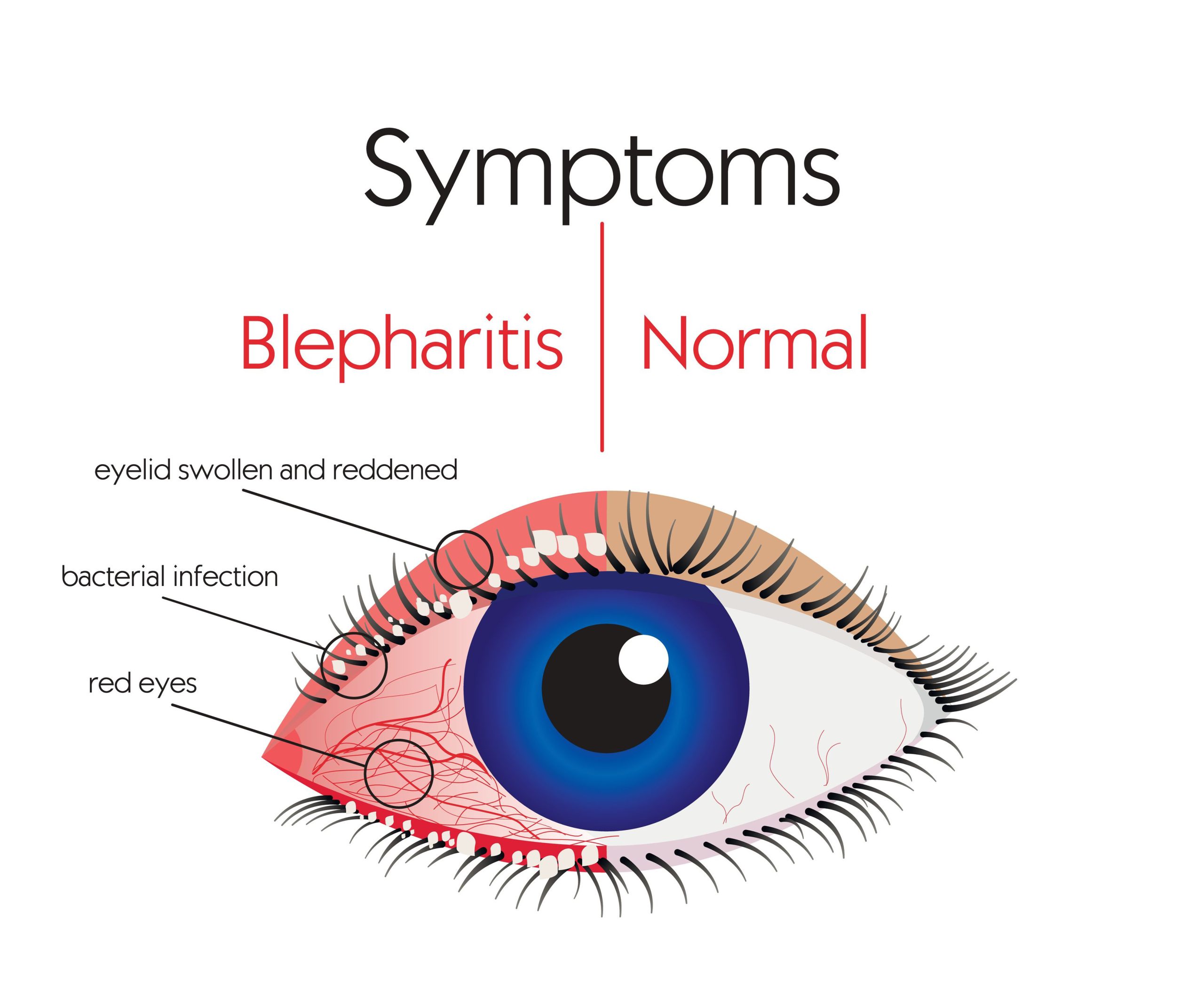Introduction
When it comes to our health, our eyes deserve special attention. One common yet often overlooked eye condition is blepharitis. This article delves into it, exploring its symptoms, causes, treatment, and prevention strategies.
What is Blepharitis?
Blepharitis is an inflammatory disorder affecting the eyelids, specifically, the area where the eyelashes grow. This ailment can lead to discomfort, itchiness, and even eye redness. Recognizing the signs early on and eye disease treatment are essential to ensure prompt and effective management.
Symptoms of Blepharitis
-
- Irritation and Itching: It often manifests as persistent itching and irritation along the eyelid margins.
- Redness and Swelling: The affected eyelids might appear red, swollen, and slightly greasy.
- Crust Formation: Patients may notice the formation of crust or debris at the base of the eyelashes, particularly upon waking up.
- Watery Eyes: Excessive tearing or watery eyes can indicate this disease, as the inflammation affects the eye’s tear film.
- Sensitivity to Light: Some individuals might experience increased sensitivity to light due to inflammation.
Factors Contributing to Blepharitis
Several factors can contribute to the development of blepharitis:
-
- Bacterial Overgrowth: Bacteria, particularly Staphylococcus, can increase on the eyelids, leading to inflammation.
- Skin Conditions: Certain skin conditions like seborrheic dermatitis can exacerbate blepharitis.
- Eyelash Mites: Tiny eyelash mites, known as Demodex, can also play a role in blepharitis.
- Poor Eyelid Hygiene: Inadequate eyelid hygiene can allow debris and bacteria to accumulate, triggering the condition.
Managing Blepharitis Effectively
Managing this disease effectively involves a combination of good hygiene practices, lifestyle adjustments, and, in some cases, medical intervention.Blepharitis management focuses on relieving symptoms and preventing recurrences:
-
- Warm Compresses: Warm compresses can help loosen crusts and improve oil flow from eyelid glands.
- Eyelid Hygiene: Regular, gentle cleansing of the eyelids can remove debris and prevent bacterial overgrowth.
- Medicated Ointments: In some cases, doctors may prescribe antibiotic ointments to address bacterial infection.
- Lifestyle Changes: Adjusting your lifestyle, such as using artificial tears, can alleviate symptoms.
Prevention: A Key Approach
Preventing Blepharitis involves adopting healthy habits:
-
- Eyelid Hygiene: Proper eyelid hygiene is crucial in managing it. Regularly clean your eyelids and eyelashes using warm water and a gentle cleanser recommended by your eye doctor. You can use a clean washcloth or cotton pad to gently scrub the base of your eyelashes. This helps remove debris, excess oil, and bacteria contributing to it.
- Warm Compresses: Applying warm compresses to your closed eyelids can help soften and loosen any crusts or debris, making it easier to clean your eyelids. Use a clean, damp cloth or a commercially available warm compress mask. Hold the compress against your closed eyelids for about 5-10 minutes, repeating this process a few times daily.
- Artificial Tears: Lubricating eye drops, also known as artificial tears can help soothe itching and dryness associated with this disease. These drops can also help flush out any irritants and improve the overall health of your eyes.
- Medicated Eyelid Scrubs: Sometimes, your doctor may recommend medicated eyelid scrubs or wipes containing ingredients like tea tree oil or hypochlorous acid. These products can help control bacterial growth and inflammation on the eyelids.
- Diet and Lifestyle Changes: Certain dietary changes can help manage this disease. Foods like flaxseeds, fatty fish and walnuts containing Omega-3 fatty acids may benefit the condition. Maintaining good overall eye health through a balanced diet which is rich both in vitamins and minerals is also important.
- Avoiding Irritants: Reduce exposure to irritants that can exacerbate blepharitis. This may include avoiding makeup, especially around the eyes, or choosing hypoallergenic products. Remove contact lenses before applying treatments and ensure they are properly cleaned and disinfected.
- Consulting an Eye Care Professional: If your symptoms are severe or do not improve with home care, it’s important to seek the guidance of an eye care professional and book an appointment. They can diagnose your specific type of it and recommend appropriate treatments, including prescription medications or procedures.
FAQs
Is blepharitis a contagious condition?
Blepharitis is not usually contagious; it’s caused by bacteria and poor eyelid hygiene. You can’t catch it from someone like a cold, but proper hygiene can prevent its spread.
Can I wear makeup if I have blepharitis?
While it’s best to avoid makeup during blepharitis flare-ups, once your symptoms are controlled, you can wear makeup. Regularly clean your makeup tools to prevent further irritation.
Are there any long-term complications of blepharitis?
If left untreated, blepharitis can lead to chronic dry eyes, styes, or even damage to the cornea. Early management is crucial to prevent such potential complications.
Can I treat blepharitis at home, or should I see a doctor?
Mild cases of blepharitis can be managed at home with proper eyelid hygiene and warm compresses. If symptoms persist or worsen, consulting an eye care professional is recommended.
Conclusion
In eye health, blepharitis is a noteworthy contender that demands attention. By understanding its symptoms, causes, treatment, and prevention, we empower ourselves to take proactive steps toward maintaining optimal eye health. Remember, your eyes deserve the best care possible. Contact us in case you have further questions about eye diseases.

